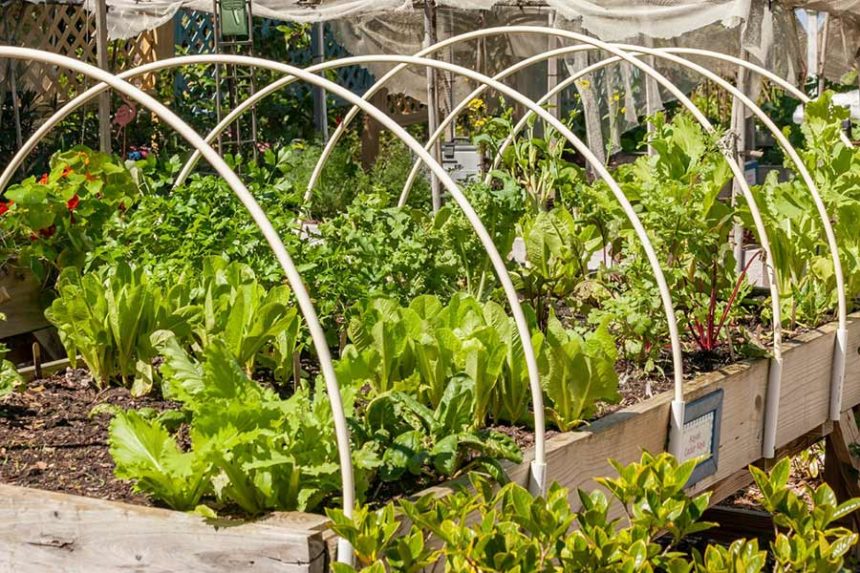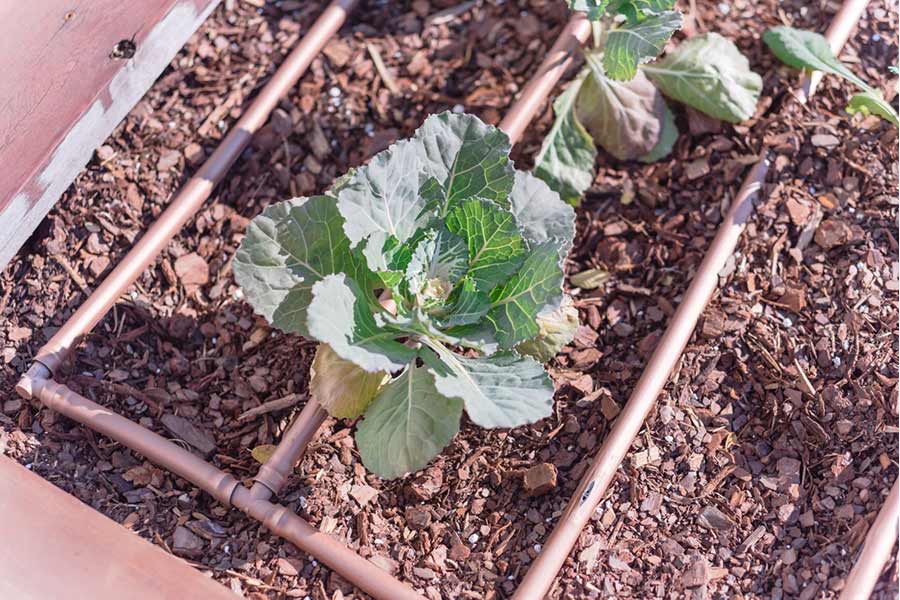Managing and maintaining raised bed gardens
Published at
A variety of vegetables can be produced effectively using raised bed gardens. Many of the same principles used with traditional gardening are used with raised beds. Plant spacing, irrigation, mulch, fertilizer, weed and pest control, and season extension are principles we will discuss in this article.
Plant Spacing
All plants need room to grow to their potential. Seed packets contain information about spacing needs for individual plants and plant species. It is recommended to follow those instructions as you plan your garden.
Irrigation
If soil drainage is a problem, raised bed gardens can be an effective solution. One drawback is that because there is increased drainage, you will have to water more frequently as the soil will dry out faster. This is especially true if you use soilless media to fill your garden beds. This can be hydrophobic and repel water if it gets dried out.
During the heat of the summer, you may notice that you will have to water daily to maintain the moisture content of the soil.
Either drip or sprinkler irrigation can be used on timers. Drip irrigation with drip tubing or soaker hoses help to conserve water and keep the water off the plant leaves. Sprinkler irrigation can be used as well but is less desirable due to disease problems.

Mulch
The use of mulch can help maintain moisture and reduce weeds in your raised bed gardens. Much has been said about mulch in previous articles, so just a short recap.
Plastic sheeting can increase soil temperatures and decrease weed issues, but because raised beds head up more quickly than traditional in-ground gardens the use of plastic sheeting is unnecessary. Weed fabric can be a viable choice to reduce weed issues.
In addition, it does not trap the heat inside the bed, so it is a good option. The use of bark or similar organic material can be beneficial by keeping the soil moisture high, while reducing weed issues.
Fertilizer
Fertilizing plants in raised bed gardens is always a good practice. Plants need the three primary nutrients: nitrogen, phosphorus, and potassium. In addition, calcium, sulfur, magnesium, and various micronutrients may be required.
We recommend doing soil testing to determine the actual fertilizer needs. Contact your local extension educator for help collecting a soil sample and interpreting the results of the test.
Weed and Pest Control
One of the big benefits of raised bed gardens is easier access to pull weeds and inspect plants for insect pests. Weeds will continue to be an issue in raised bed gardens. We suggest an integrated approach to weed and pest control.
Rotation of vegetable crops between raised beds from one year to the next will help alleviate some of the weed and pest pressure. In addition, mechanical or physical weed control should be used. Weeds are much easier to control when they are young and tender and before they go to seed. We know that weed seeds last for years in the soil and will germinate when they are exposed to the proper conditions. This happens when soil is disturbed in any manner, so if you can limit soil disturbances you can limit weed pressure. Chemical control of weeds and other pests should be a last resort. If the weed or pest pressure is unsustainable with other control methods, make sure to read and follow pesticide labels. They are the law.
For more information on using pesticides, visit with your local extension educator.
Season Extension
Raised beds will heat up and cool down more quickly compared to traditional gardens. To extend the season at the beginning of the growing season or at the end of the growing season, there are some simple techniques that are especially useful with raised beds.
Raised beds can be equipped with PVC pipe, rebar, or other sturdy material to form an arching supportive structure above the garden. This structure can be used to secure horticultural grade plastic sheeting over the garden to mimic a mini greenhouse. During the warmth of the day the sides can be raised up to release the hot air, and before the sun goes down, they can be put back down to trap heat for the night ahead.
During the heat of the summer, shade cloth can be placed on these structures to help cool the plants so they will continue to produce in the heat.

In the Garden is sponsored by ProPeat, which is dedicated to delivering solutions for any of your professional fertilization needs. Whether you need to reduce the harm to soils and the environment, or you're interested in the latest nitrogen, carbon and biochemical technologies, ProPeat is the perfect fit.


